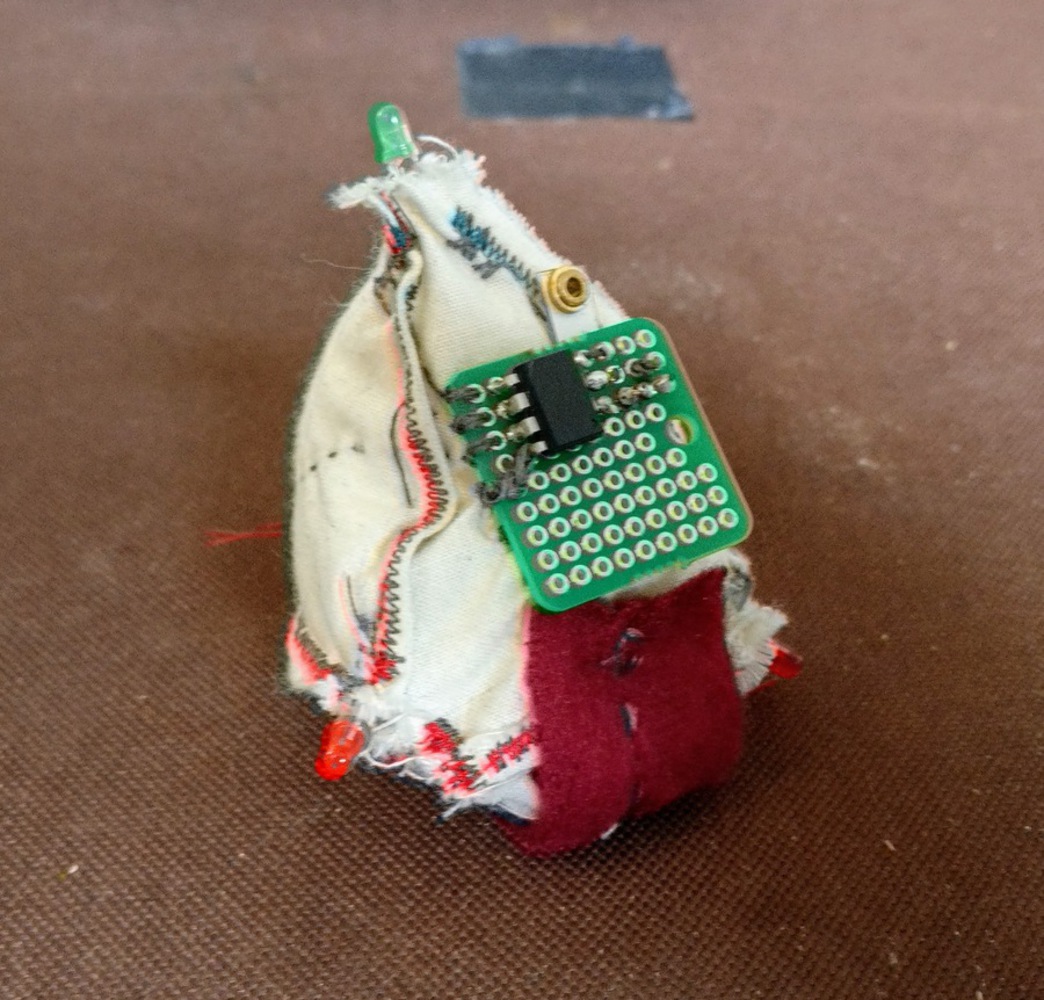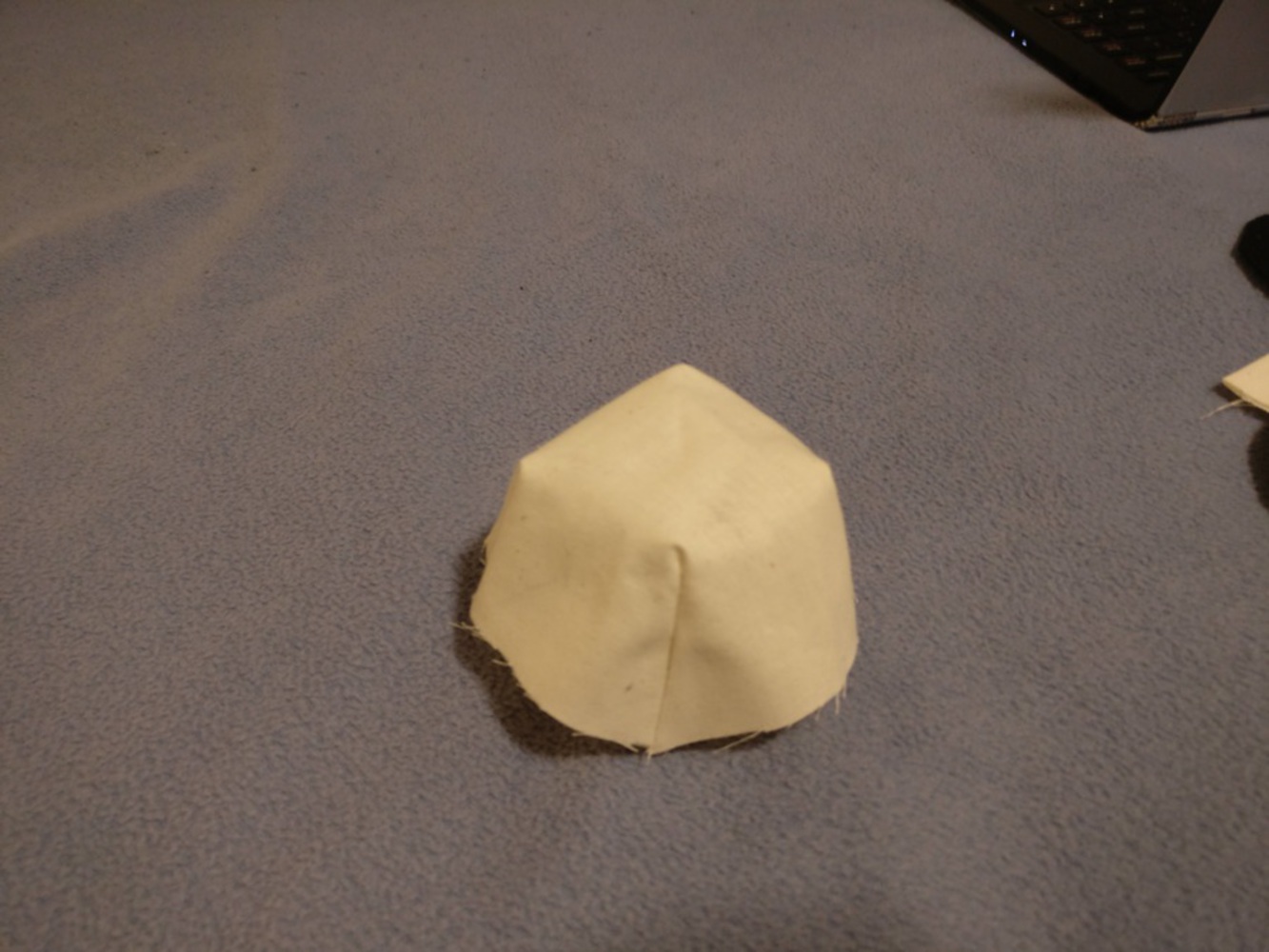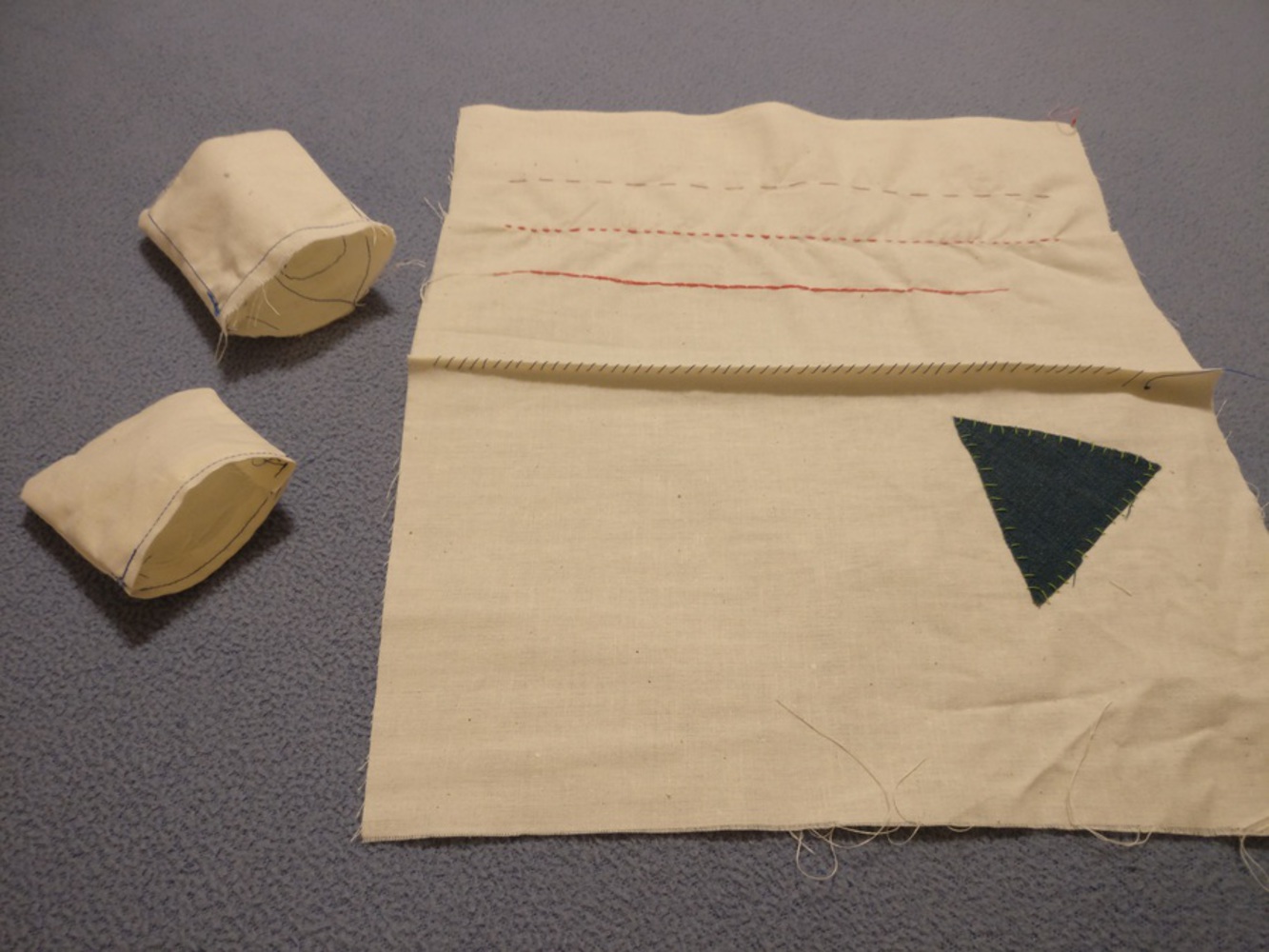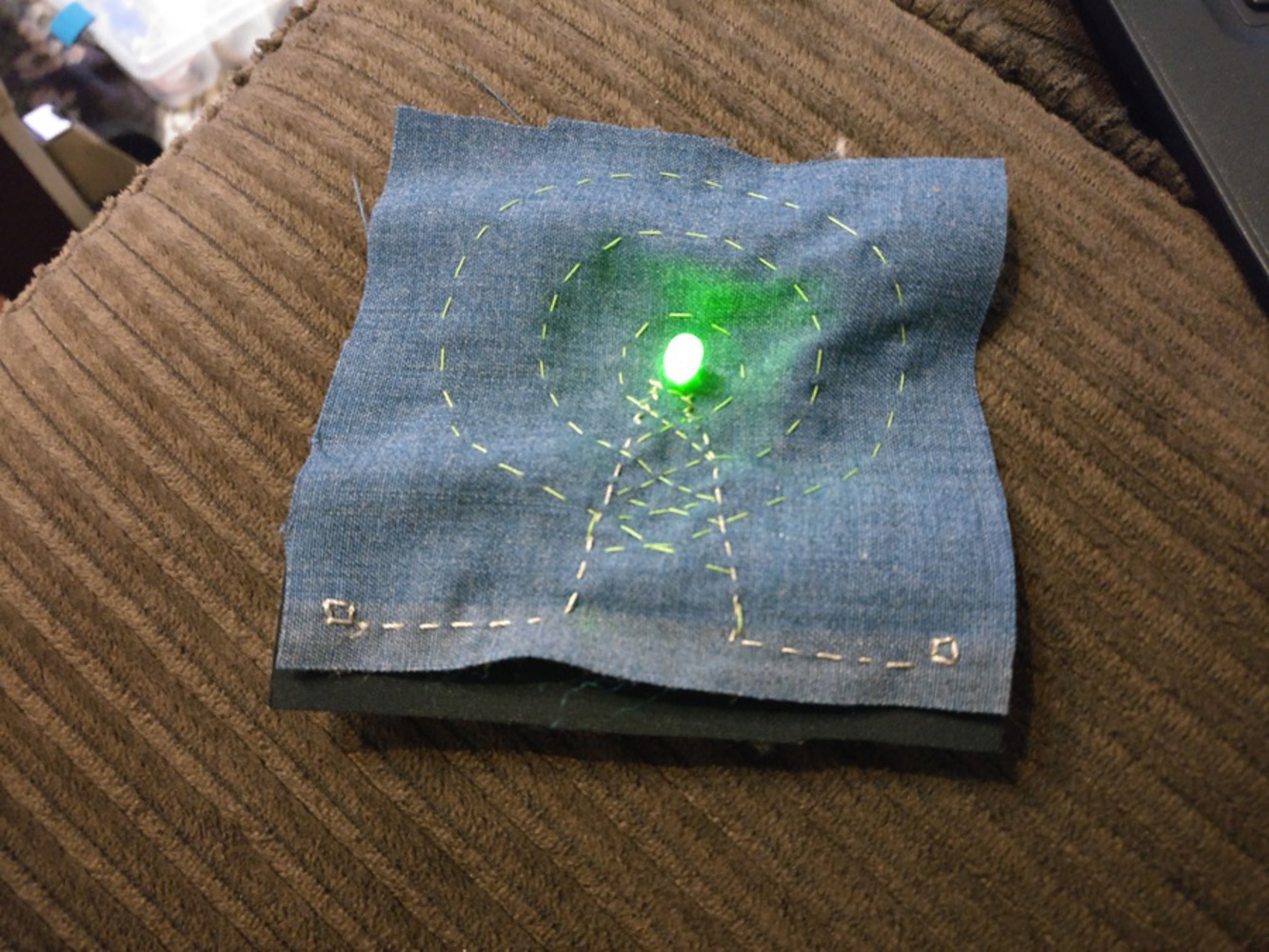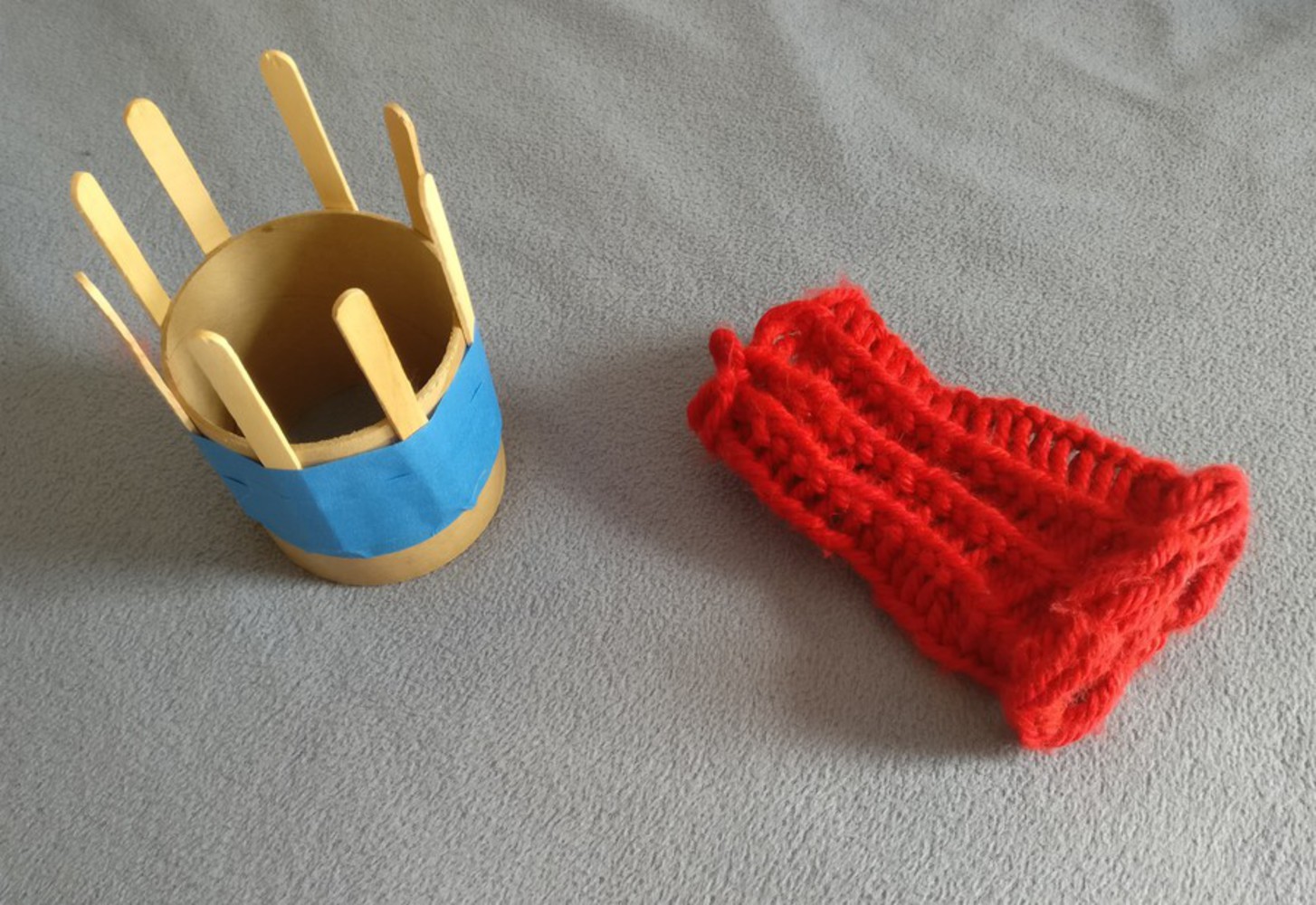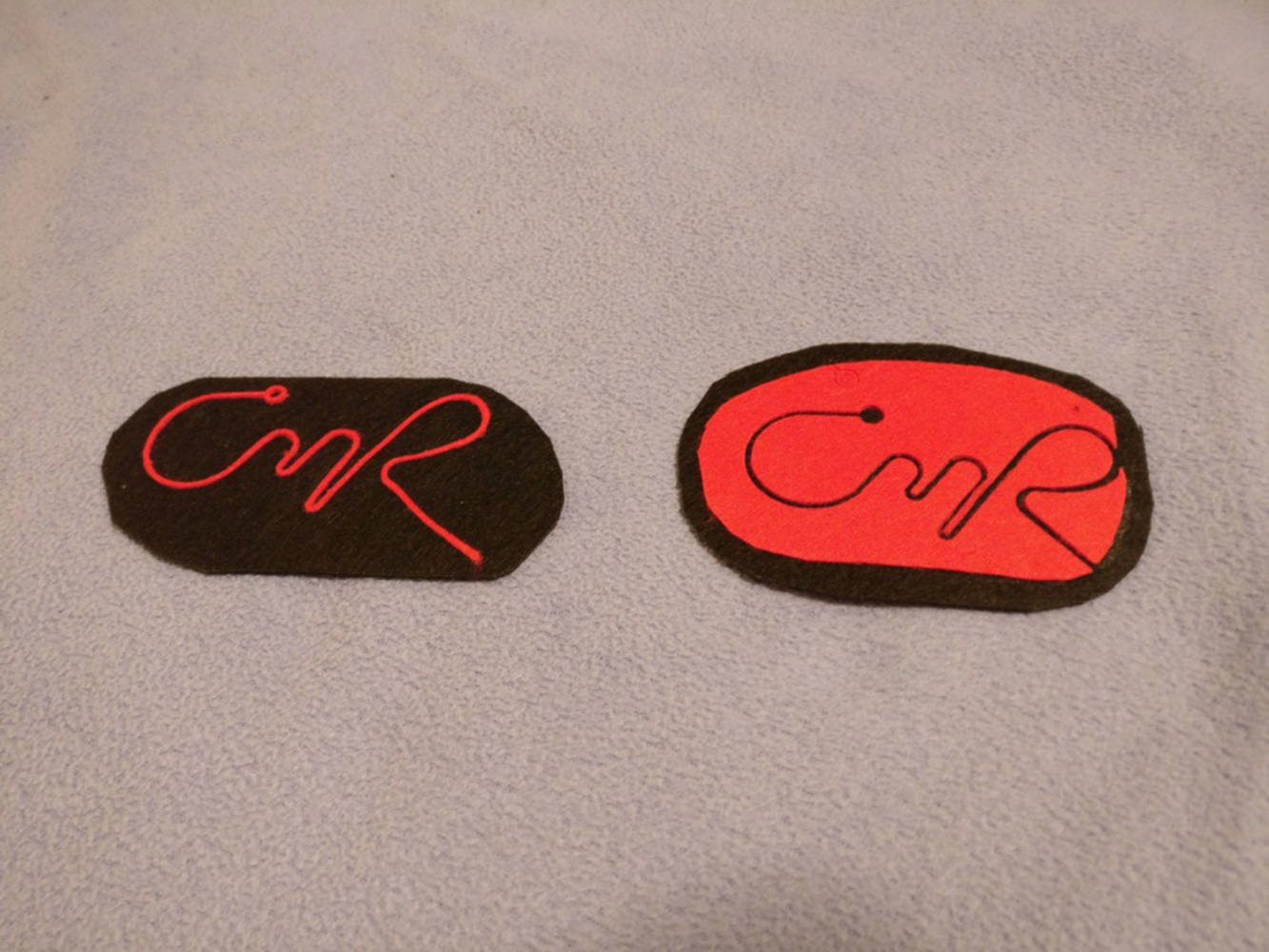Reflection
The prototype turned out well, and most issues were with the rigid elements of the electronics. Organizing the Piezo element and the MCU on a generic perf circuit board did not allow for a very compact package. Furthermore, connecting the conductive thread to the small solder pads would have been easier on typical wearable platforms such the Gemma, which have larger pads. Ultimately, a custom PCB would be essential to making this object function in the ideal manner. A PCB would also allow for the MCU and battery to be connected with solid metal leads. This would not only make the package more compact, but would also mean less resistance between the MCU and battery, and thus brighter LEDs and more consistent behavior. Resistance in conductive thread is useful for limiting LED current, but on a power source line, the voltage drop can have unexpected consequences on the computer's functioning.
In a future iteration I would look for a different material to create the object. The muslin used is simple to work with, but easily frays at the ends and it not ideal for small pieces. A non-woven fabric such as felt may have produced smoother edges, as well as provided a more firm structure. In this case, it would be easier to stitch the conductive leads before the object is stuffed. This would allow the electronics to be connected in the pouch with leads not only on the outer surface of the object; this would lead to much easier and more reliable wire routing. Creating a slightly larger structure would have also made construction easier, as the conductive traces could have been machine sewn. Thicker traces would lead to lower resistance and better performance
